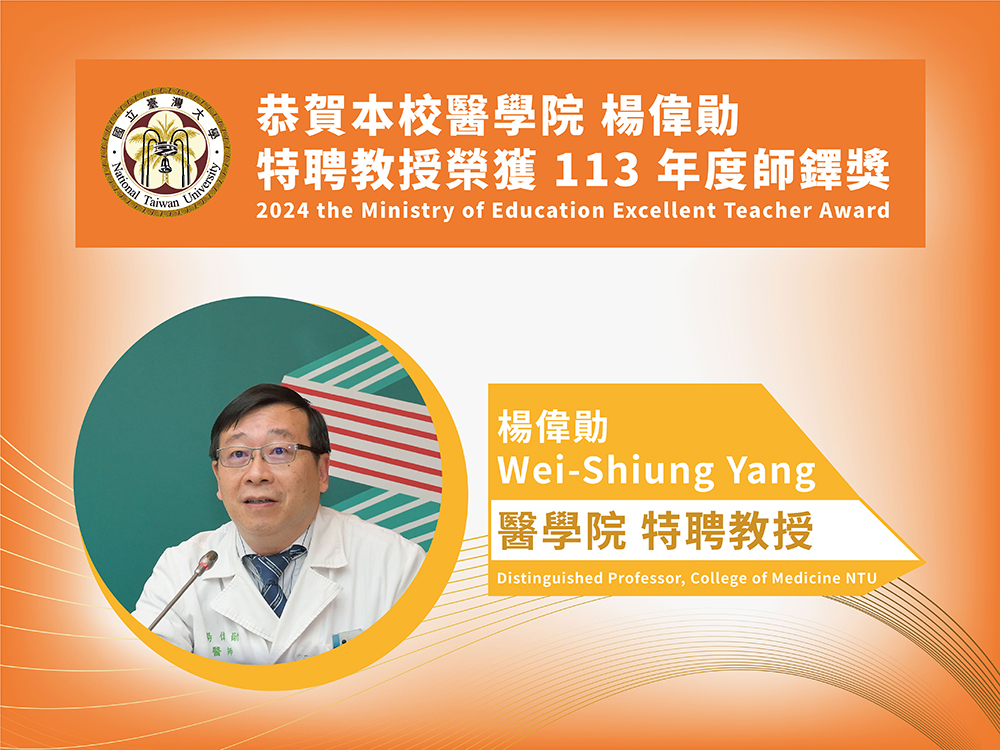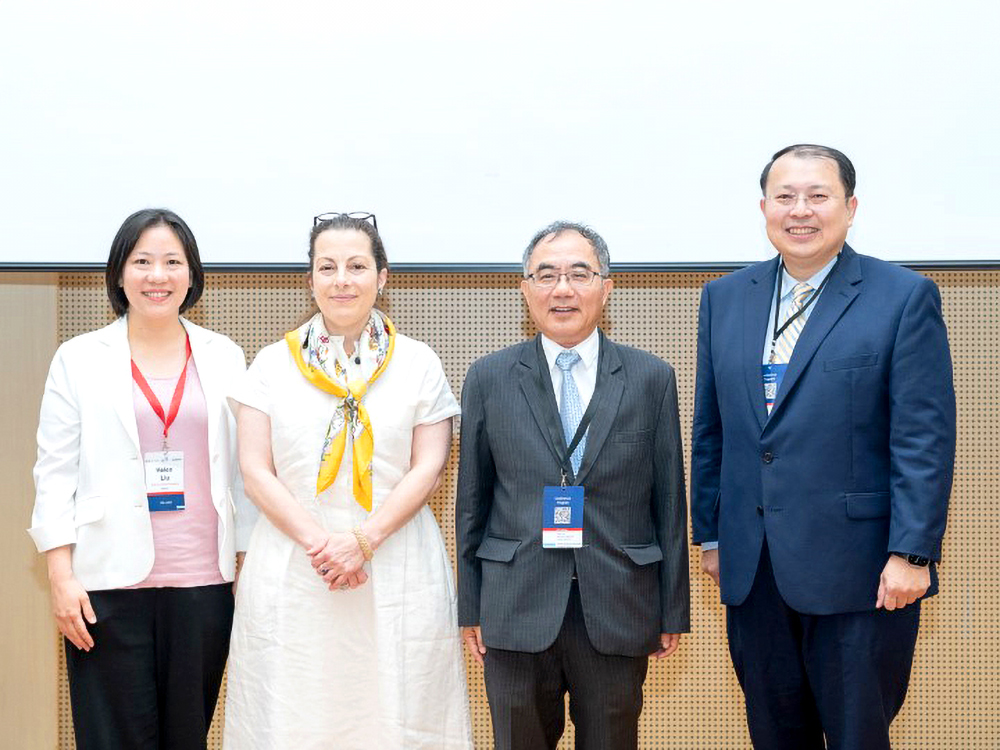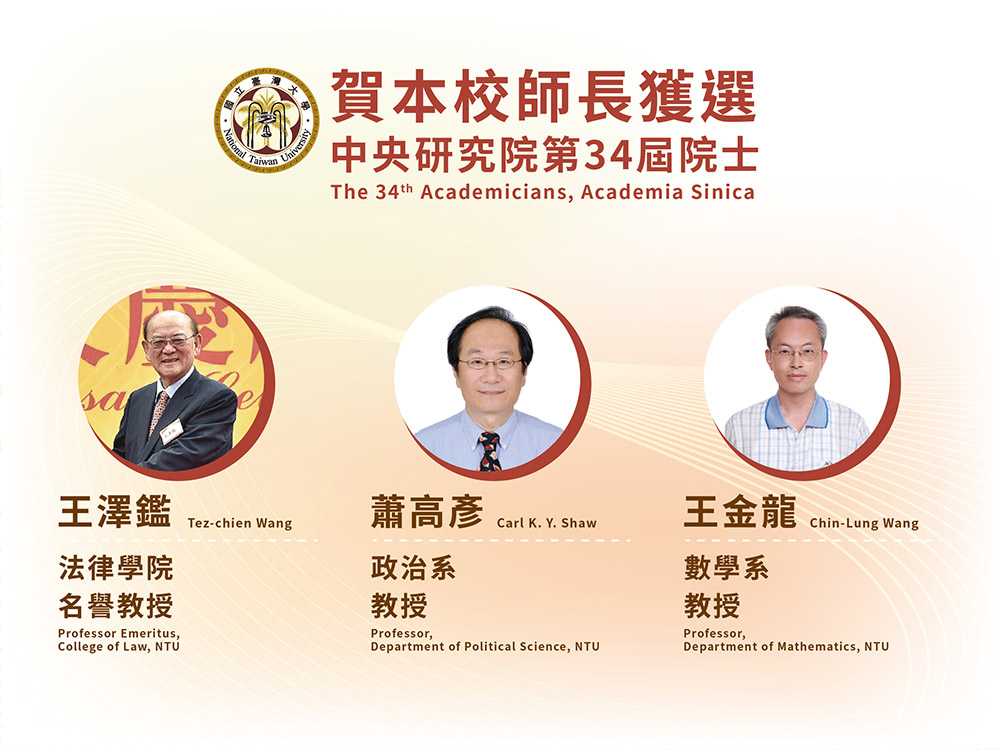
NTU Opening Ceremony: “Where Creativity and Dreams Take Flight”
瀏覽器版本過舊,或未開啟 javascript
請更新瀏覽器或啟用 javascript
Spotlights
Prof. Yih-Min Wu (first from right) at the award ceremony.
Prof. Yih-Min Wu (吳逸民), Chairman of NTU’s Department of Geosciences, received the 2019 Executive Yuan Award for Outstanding Science and Technology Contribution from Vice Premier Chi-Mai Chen (陳其邁) at the Executive Yuan Assembly Hall on December 12, 2019.
Prof. Wu is a pioneer in the research of earthquake early warning systems. The system which he designed and built during his tenure at Taiwan’s Central Weather Bureau was the first of its kind to use real-time earthquake monitoring to meet the needs of seismic early warning. This system proved its worth in 1999 by determining the earthquake epicenters and magnitudes within 102 seconds after the 921 earthquake shook Taiwan, gaining the country global recognition for its R&D in earthquake early warning systems.
Wu joined NTU in 2004 and continued his research and development of on-site earthquake early warning systems and investigating the key relationship between P-waves and S-waves. The “P-Alert Strong Motion Network,” which he designed, truly was a groundbreaking scientific and technological success. The Network can detect P-wave information, including acceleration, velocity, and longitude, within the initial 3 seconds of its arrival. As soon as the system received this information, it issues warning signals over 10 seconds before the arrival of the S-wave, giving people more time to evacuate. Importantly, since the system uses low-cost microelectromechanical system (MEMS) accelerometers, the cost of the P-alert device is just one-tenth of the cost of traditional strong motion detection instruments. This low-cost makes it feasible to have the device installed widely in communities, schools, factories, public transportations, and elevators.
Thanks to the support of the Ministry of Science and Technology, the National Science and Technology Center for Disaster Reduction, and the efforts of Prof. Wu, the P-alert device has already been deployed in over 700 schools around Taiwan, enterprise facilities in scientific parks, as well as Taipei MRT stations. The system generates detailed shake maps by collecting information from different stations via the internet, thus providing invaluable references for future natural disaster prevention efforts. Moreover, the reception and release of information are completely automatic, significantly mitigating the social and economic damage caused by seismic hazards.
During the past five years, besides dedicating himself to teaching and research, Wu has traveled around the world to promote the importance of earthquake early warning systems. His P-alert device is now utilized in China, Indonesia, India, Vietnam, South Korea, New Zealand, Greece, Mexico, Nepal, Bhutan, Solomon Islands, and the Philippines, helping to save lives in earthquake risk zones around the world and showcasing Taiwan’s scientific prowess on the international stage.
This article is also featured in No. 76 of NTU Highlights (February, 2020).

NTU Opening Ceremony: “Where Creativity and Dreams Take Flight”

Prof. Wei-Shiung Yang wins MOE National Excellent Teacher Award

NTU College of Public Health's Global Health Program Joins the Association of Schools of Public Health in the European Region

NTU hosts a successful dg.o 2024

Congratulations to NTU faculty members elected as 34th AS academicians
Current Spotlights